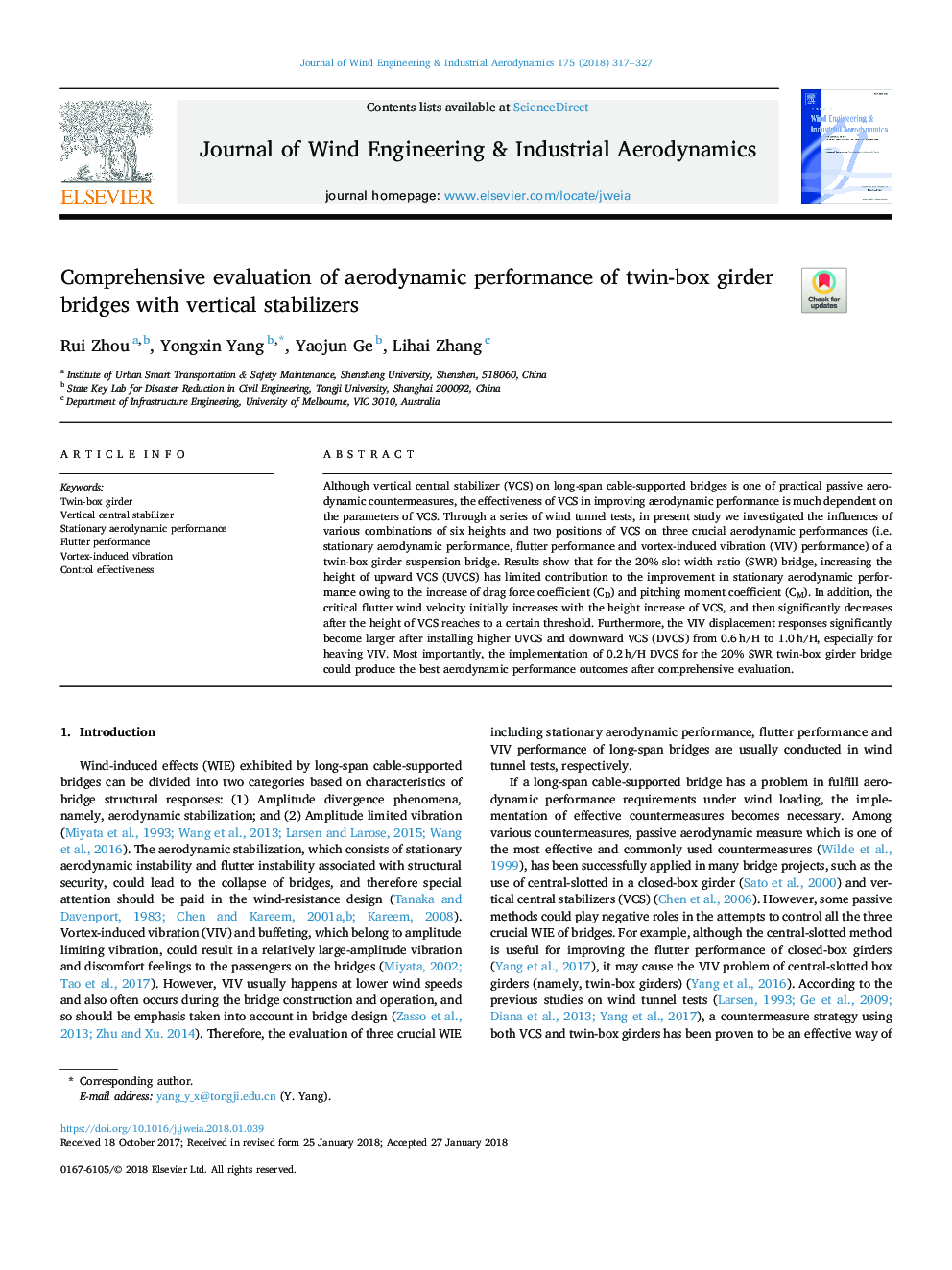| Article ID | Journal | Published Year | Pages | File Type |
|---|---|---|---|---|
| 6756997 | Journal of Wind Engineering and Industrial Aerodynamics | 2018 | 11 Pages |
Abstract
Although vertical central stabilizer (VCS) on long-span cable-supported bridges is one of practical passive aerodynamic countermeasures, the effectiveness of VCS in improving aerodynamic performance is much dependent on the parameters of VCS. Through a series of wind tunnel tests, in present study we investigated the influences of various combinations of six heights and two positions of VCS on three crucial aerodynamic performances (i.e. stationary aerodynamic performance, flutter performance and vortex-induced vibration (VIV) performance) of a twin-box girder suspension bridge. Results show that for the 20% slot width ratio (SWR) bridge, increasing the height of upward VCS (UVCS) has limited contribution to the improvement in stationary aerodynamic performance owing to the increase of drag force coefficient (CD) and pitching moment coefficient (CM). In addition, the critical flutter wind velocity initially increases with the height increase of VCS, and then significantly decreases after the height of VCS reaches to a certain threshold. Furthermore, the VIV displacement responses significantly become larger after installing higher UVCS and downward VCS (DVCS) from 0.6â¯h/H to 1.0â¯h/H, especially for heaving VIV. Most importantly, the implementation of 0.2â¯h/H DVCS for the 20% SWR twin-box girder bridge could produce the best aerodynamic performance outcomes after comprehensive evaluation.
Related Topics
Physical Sciences and Engineering
Energy
Renewable Energy, Sustainability and the Environment
Authors
Rui Zhou, Yongxin Yang, Yaojun Ge, Lihai Zhang,
